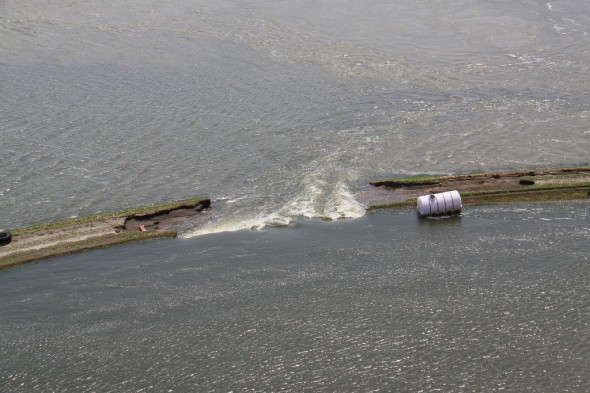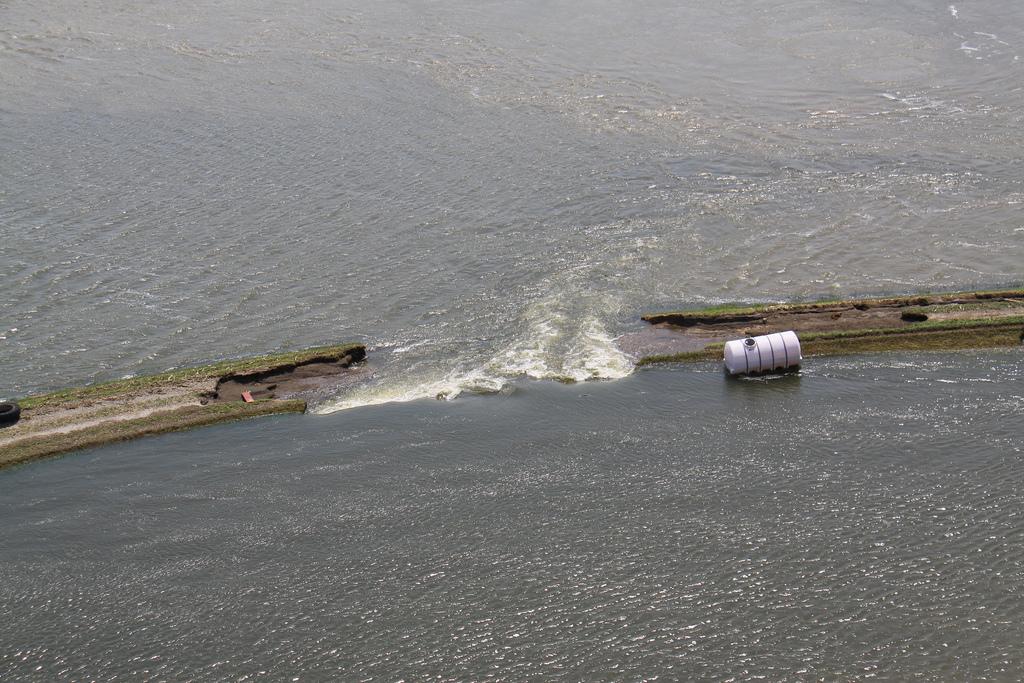Water Continues to Rise: Floods Rage in States along Missouri River
Towns from Montana to Iowa are bracing for flood waters as heavy rains fall across the region and warm temperatures melt record snowfall.

The U.S. Army Corps of Engineers plans to release an unprecedented volume of water from the Upper Missouri River, and states downriver from the northern reservoirs will be especially hard hit. The Corps has been increasing the amount of water released throughout June, hitting 4,247 cubic meters (150,000 cubic feet) per second this week—more than the flow over Niagra Falls, reported The Kansas City Star.
The high water levels are due to heavy rainfall in the northern plains states, as well as the melting of record snowfalls, which has prompted the Corps to release more water from northern reservoirs in order to preserve dam infrastructure. If too much water is allowed to build behind the dams, they could breach and cause uncontrolled flooding, Reuters reported. Similar measures were taken earlier this year when flood waters from the Mississippi River were diverted into spillways to protect population centers in Louisiana.
Communities in the Missouri River’s natural floodplain are expected to see water levels above 100-year flood limits, according to a South Dakota government press release. Quoted in the release, South Dakota’s governor Dennis Daugaard said, “This isn’t a case of whether downstream residents will be hit with this. They will be.”
Earlier this month, Daugaard issued an evacuation request to all those living in the community of Dakota Dunes, located in the southeastern corner of the state. He warned that residents could be away from their homes for as long as two months because of continued flooding.
To protect the property, 200 South Dakota National Guard members and two Blackhawk helicopters were ordered to pile up sandbags and build additional walls and levees. Other National Guard units built emergency levees in the capital city of Pierre, along with neighboring Fort Pierre, with hopes of keeping flood waters at bay.
Cities and towns across Iowa are following South Dakota’s example as the Missouri River swells downstream. The water levels have not been this high in western Iowa since 1952, reported Des Moines-based WHO-TV, and now, like then, local residents are rushing to fortify their communities against the river’s onslaught. Assistance is also being provided by Iowa National Guard members and the Army Corps of Engineers, who are currently building a secondary levee near the town of Hamburg, after the initial levee was breached on June 13.
The water management practices used by the Corps—which are largely seen as the cause of flooding in these areas—are being criticized by politicians from states along the Missouri River. Many are calling for new flood-control policy, The Kansas City Star reported. But the Corps has defended its actions, saying that unexpected weather conditions have made high-water releases necessary in order to protect both the reservoir system and human life.
“We are not managing the river, the river is managing us,” said Sam Graves, a U.S. Representative from Missouri, as quoted in The Kansas City Star.
Sources: The Kansas City Star, Reuters, South Dakota State News Web, WHO-TV
A news correspondent for Circle of Blue based out of Hawaii. She writes The Stream, Circle of Blue’s daily digest of international water news trends. Her interests include food security, ecology and the Great Lakes.
Contact Codi Kozacek







Leave a Reply
Want to join the discussion?Feel free to contribute!